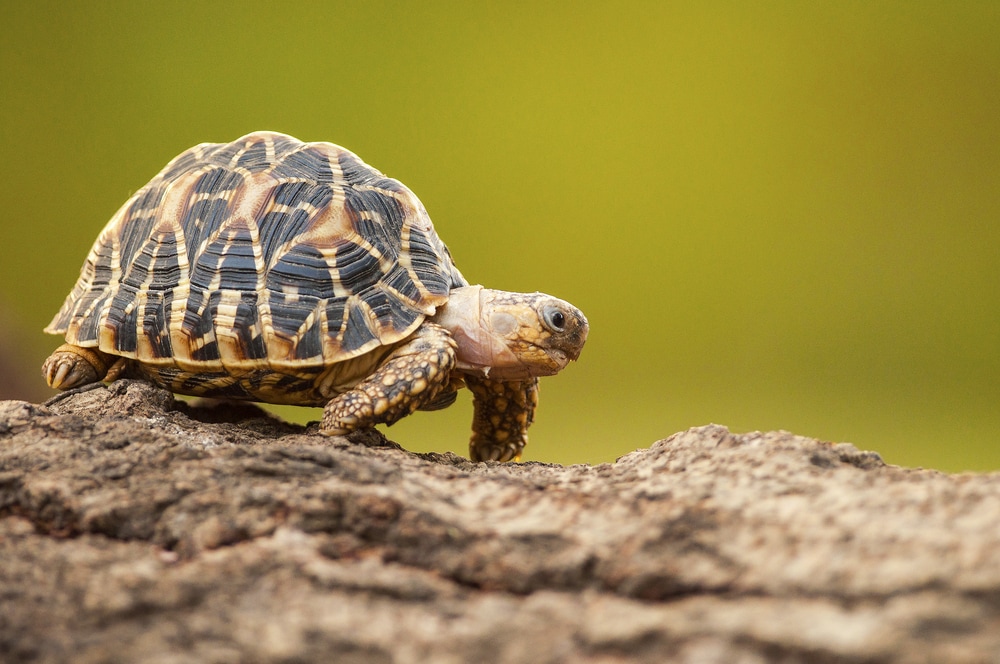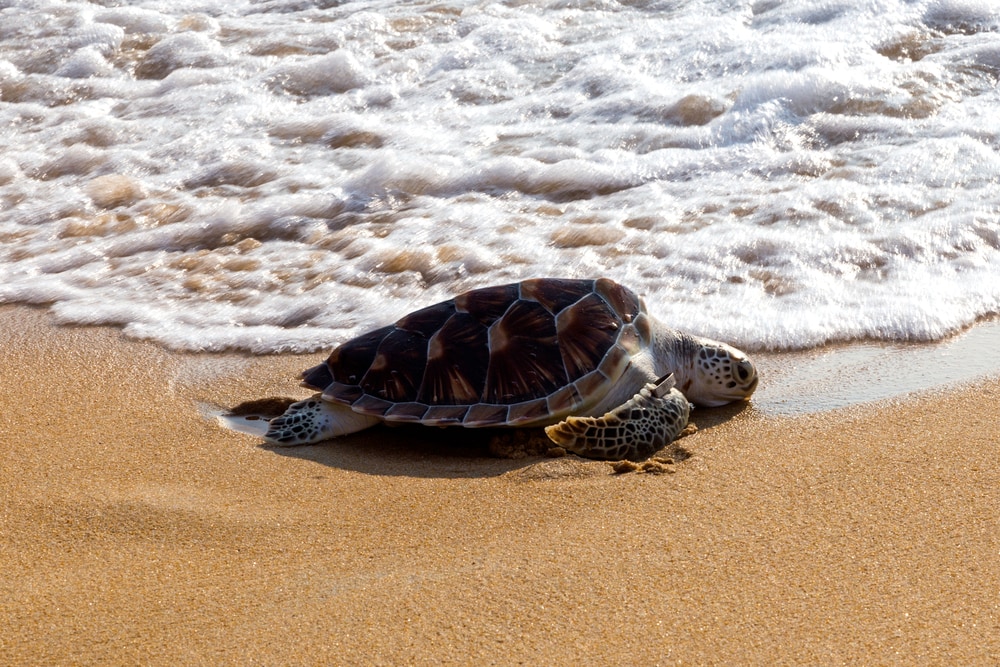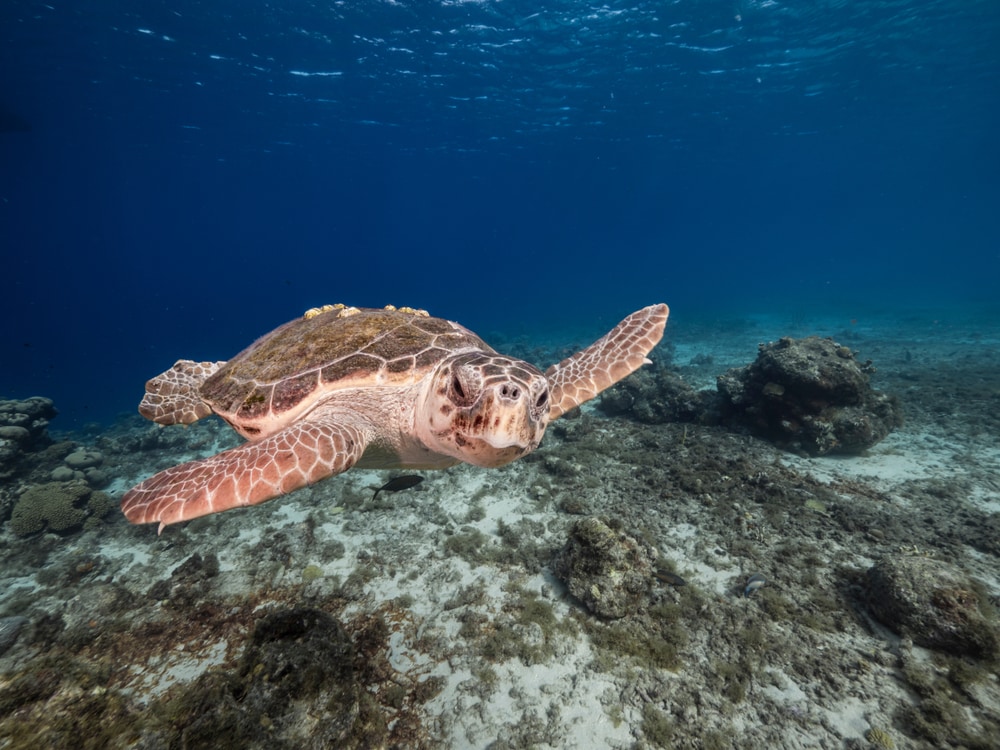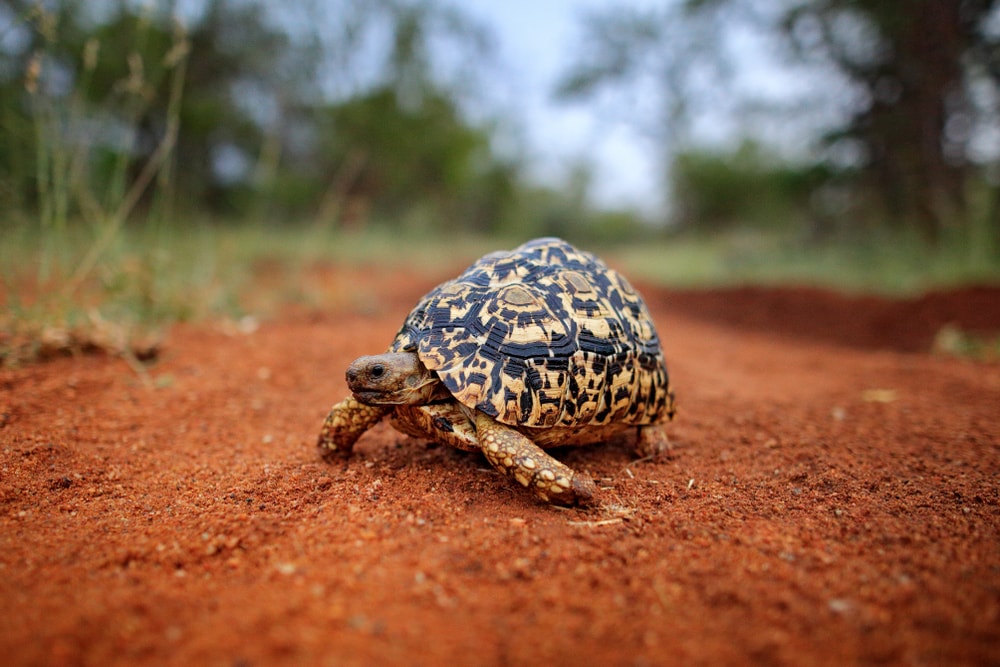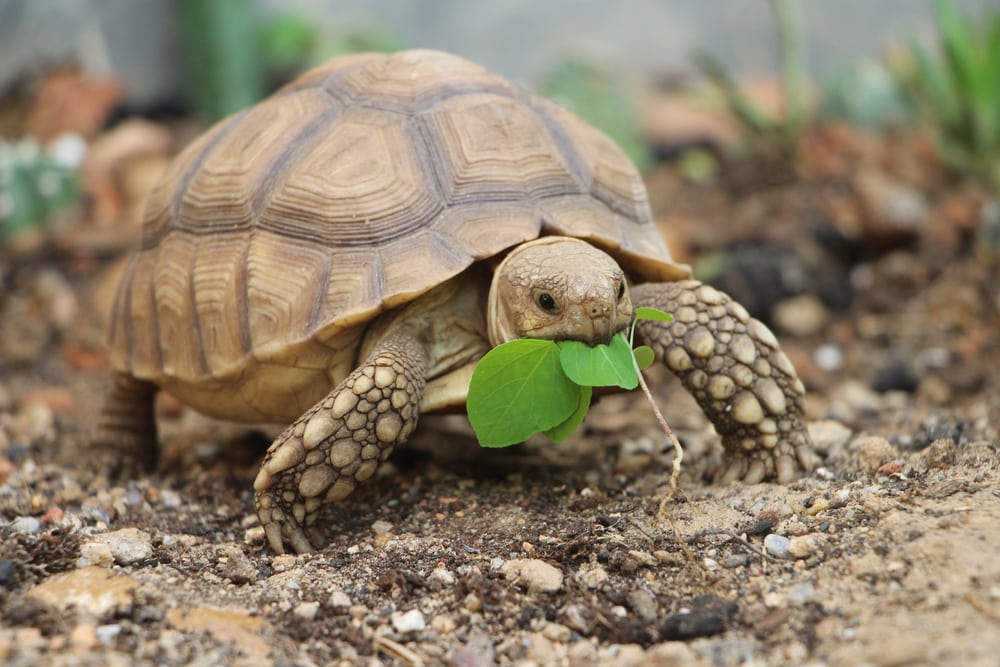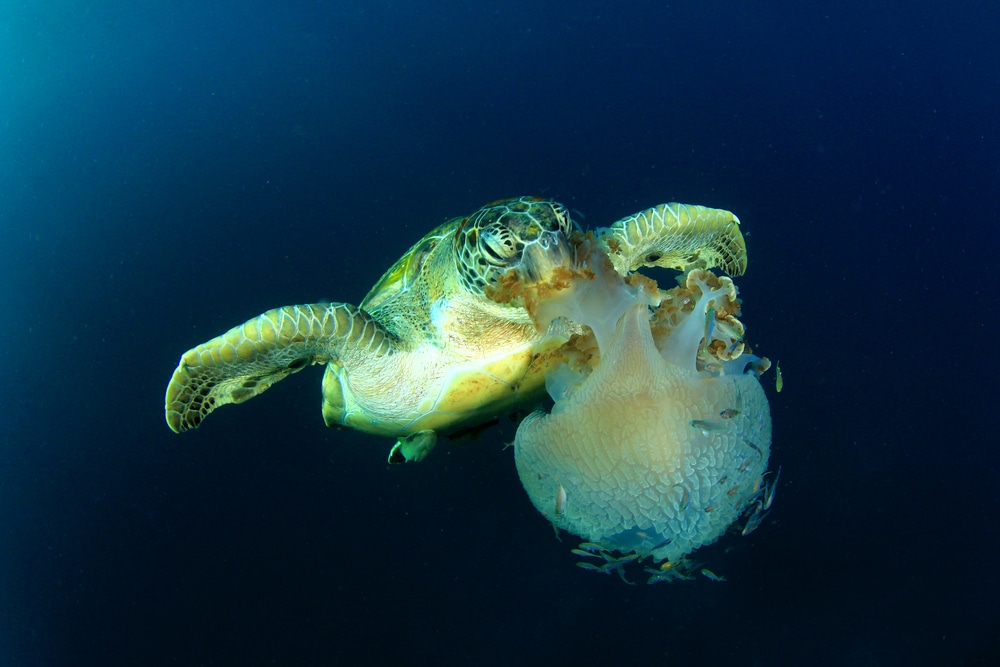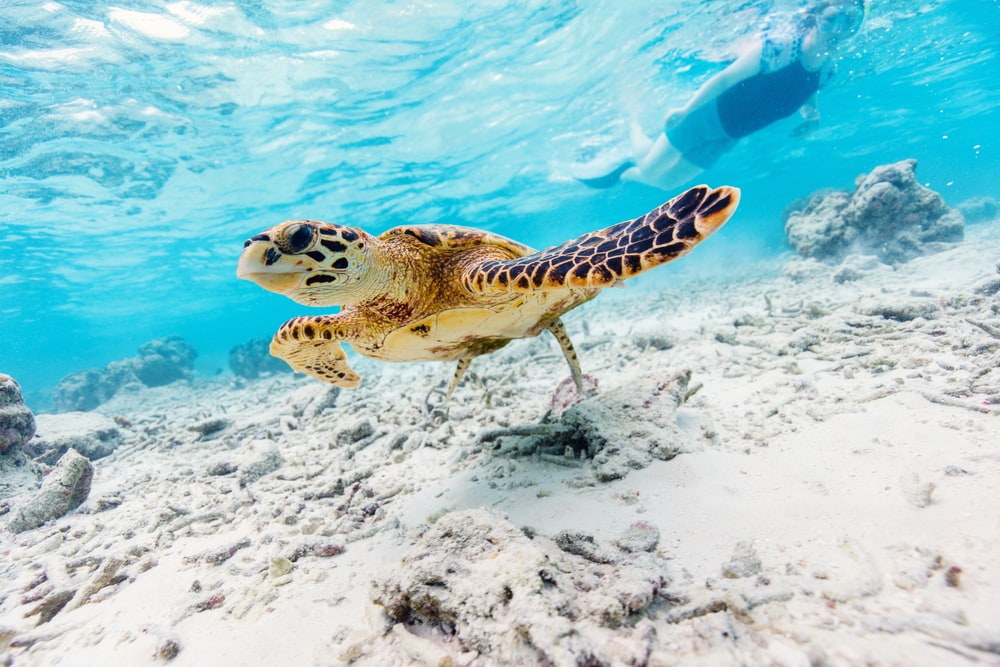
Whether you’re familiar with Squirtle, Koopa Troopas, or Franklin, you’ve seen turtles before. These hard-shelled reptiles range in size, habitat, and diet. What you may not know is that while the words “turtle” and “tortoise” can be used interchangeably in language, these are scientifically distinct animals.
All turtles are related, but you can tell turtles and tortoises apart in quite a few ways. If you’re mildly confused by the naming conventions used so far, you aren’t alone. We’ll be explaining what we mean when we say turtle or tortoise, how to tell them apart, how they’re similar, and explain what threats they deal with.
Difference Between Turtle and Tortoise
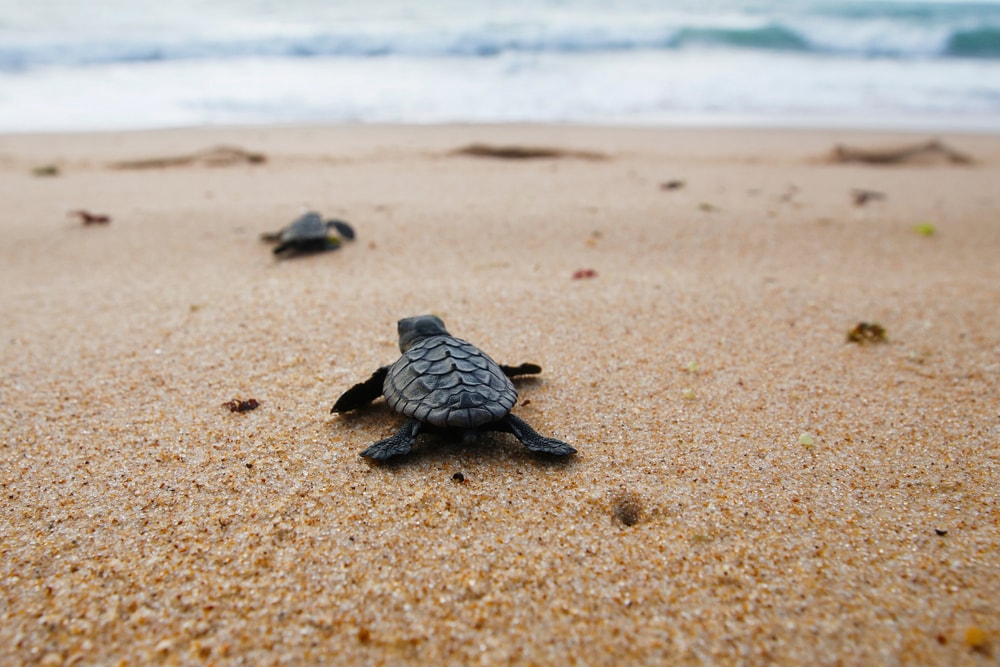
The word turtle is commonly used to refer to all species within the order Testudines. These are reptiles that have a bony shell encasing their body, technically making all tortoises “turtles.” The inverse of this isn’t true though, as not all turtles are tortoises.
Regional variations on the name can include the name turtle, tortoise, or terrapin. Turtles are usually the broad-stroke term for these animals, while tortoises refer to non-swimming species, and terrapin refers to small, aquatic turtles.
For the purpose of this article, we’ll be using more of a scientific classification between the two. Tortoises (Testudinidae) are terrestrial and live their entire lives on land. Turtles (Testiduines) are aquatic or semi-aquatic species in the same family.
Keep in mind, there are always exceptions to the rules. Because they are so similar, some traits that would typically help you determine whether an animal is a turtle or a tortoise may appear on the “wrong” one.
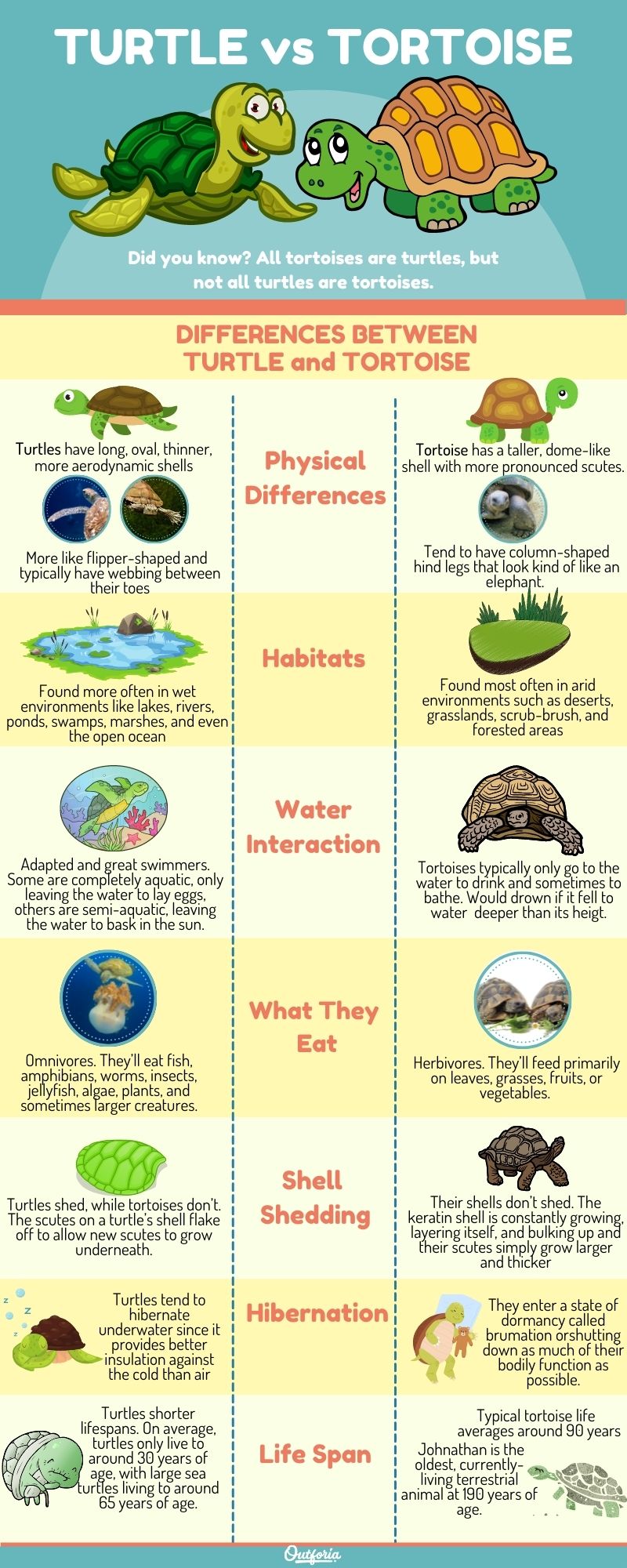
share this image on your site
<a href="https://outforia.com/t/"><img style="width:100%;" src="https://outforia.com/wp-content/uploads/2022/02/turtle-vs-tortoise-infographic-1.jpg"></a><br>turtle vs tortoise <a href="https://outforia.com">Outforia</a>
7 Detailed Differences Between Turtles and Tortoises
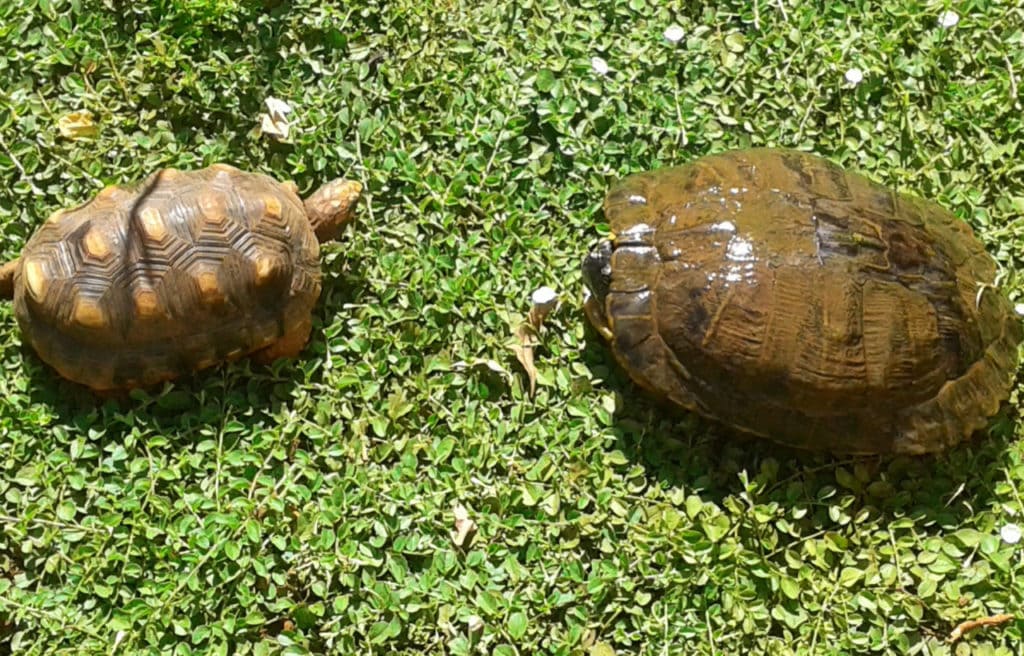
1. Turtle vs Tortoise: Physical Differences
Both types of “turtles” share many of the same physical characteristics like a shell on their back, similar skeletal structure, and similar overall appearance. Despite this, they still have distinct physical structures that can help you tell them apart, starting with their shells.
Turtles tend to have thinner, more aerodynamic shells. They’ll be shaped more like a long oval and be fairly streamlined, helping them swim better. Tortoises have taller, more dome-like shells with more pronounced scutes.
Scutes are the bumps on a turtle or tortoise’s shell, and they’re essentially just scales. We’ll go into these more later, since how their scutes grow is another distinction between the two.
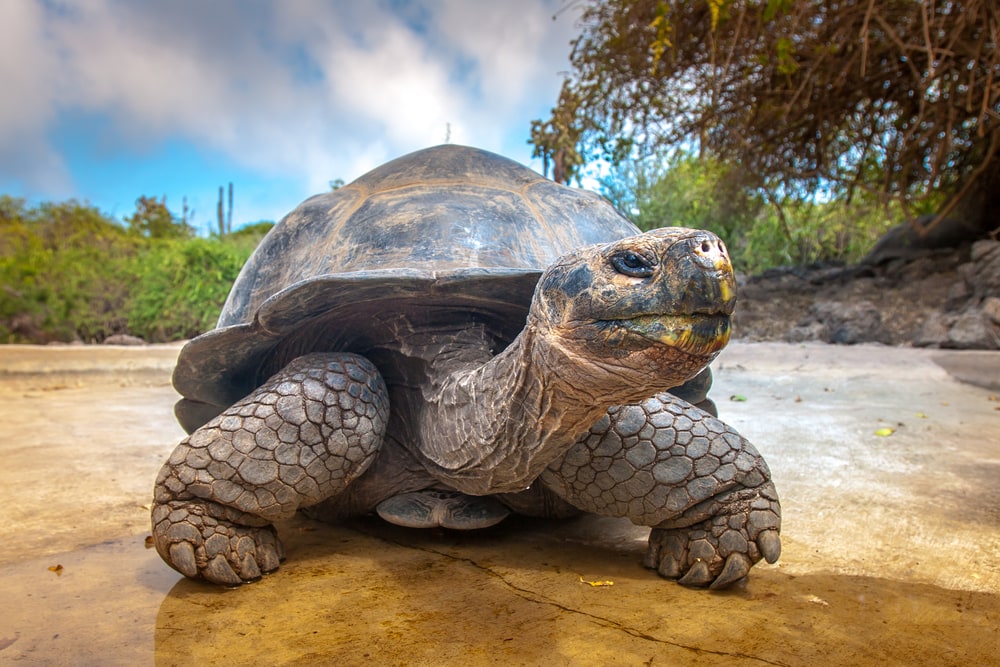
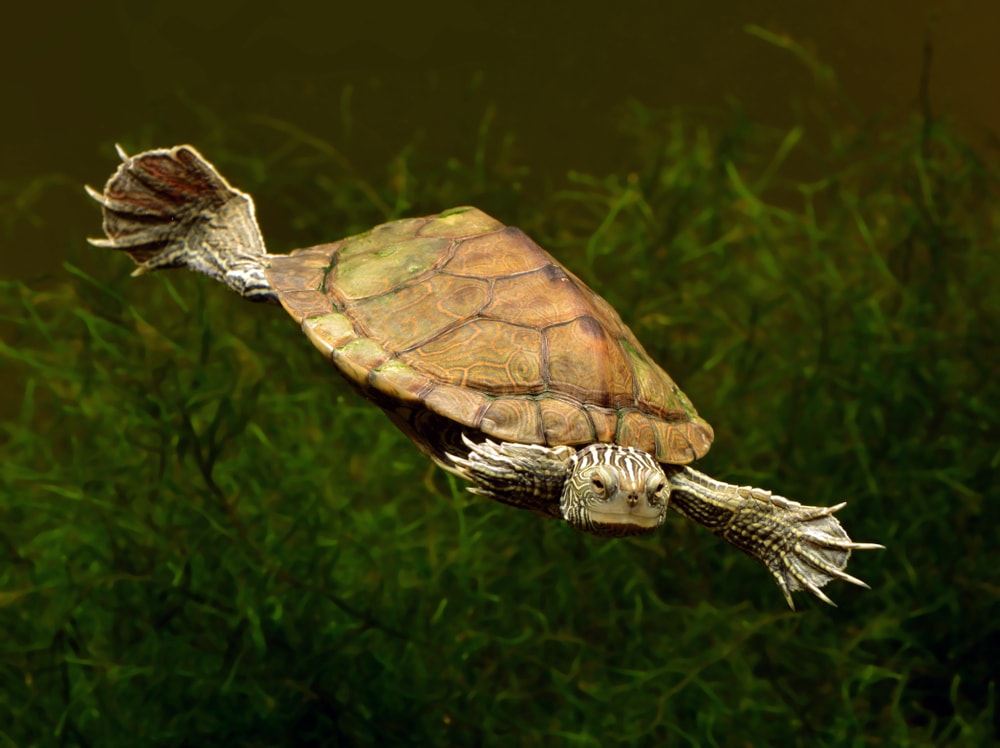
You can also tell the difference between the two by looking at their legs. Tortoises tend to have column-shaped hind legs that look kind of like an elephant. Their front limbs have a similar stubby, column shape, and they tend to have three or fewer “toes.”
Turtles, on the other hand, have very different legs. Their front and rear legs can be much more flipper-shaped, and turtles typically have webbing between their toes.
Size differences can also be an indicator of whether an animal is a turtle or tortoise. Tortoises are heavier than turtles of the same size, but they have a smaller size range. A typical tortoise will be between 4 and 60 inches (10 to 150 cm), while turtles can range from 3 inches (7.5 cm) to over 9 feet (2.7 meters) in length!
The Galapagos tortoise is the largest of the tortoise species and can reach a weight of over 800 pounds (360 kg). The largest sea turtles like the leatherback can reach weights of over 2,000 pounds (900 kg)!
2. Turtle vs Tortoise: Habitat
Where you find them is also another way to tell turtles and tortoises apart. Tortoises spend their entire lives on land and aren’t equipped for life in the water. Turtles can be completely aquatic or spend most of their time in the water, getting out only to bask in the sun. Both types of reptiles are very adaptable and make their home in a variety of terrains.
Tortoises are found most often in arid environments. Deserts, grasslands, scrub-brush, and forested areas all make great homes for them. There are of course exceptions, such as the island-dwelling Galapagos tortoise, but one of the reasons they remain isolated is their inability to cross water.
Turtles are found more often in wet environments. Lakes, rivers, ponds, swamps, marshes, and even the open ocean are all places you’ll find turtles. Sea turtles1 almost never leave the water, while freshwater turtles will be found along the banks of water sources or basking on land.
3. Turtle vs Tortoise: Do They Like Water?
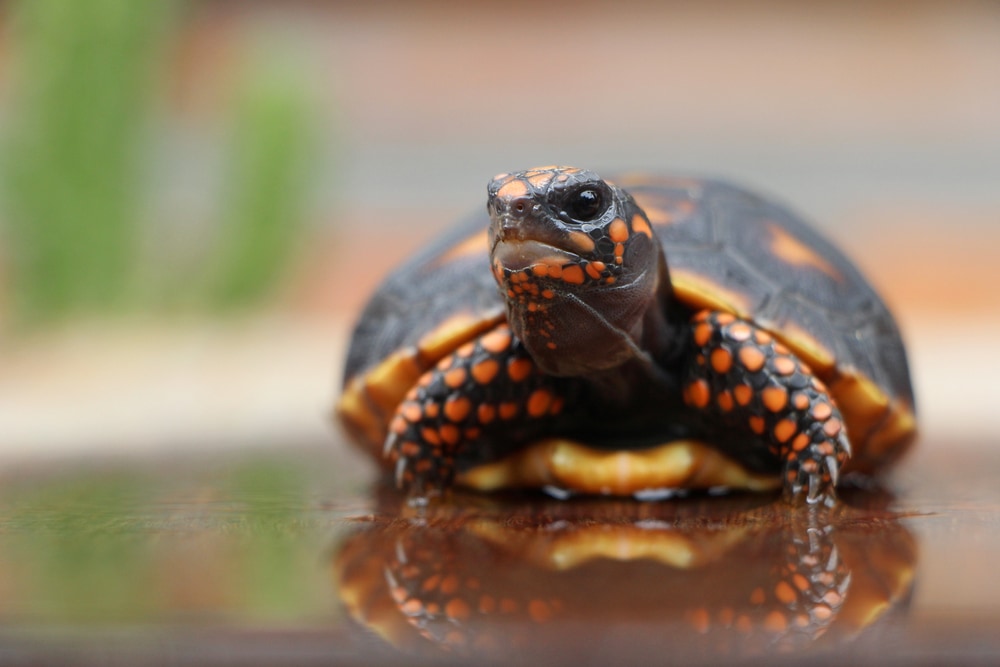
Their habitat brings up another important distinction between the two: how they interact with water.
Tortoises are exclusively land-dwelling. Since they lack a streamlined body and adapted legs to propel them, they can’t swim. At all. Tortoises typically only go to the water to drink and sometimes to bathe. If a tortoise happened to fall into water deeper than its height or it couldn’t walk out, it would drown.
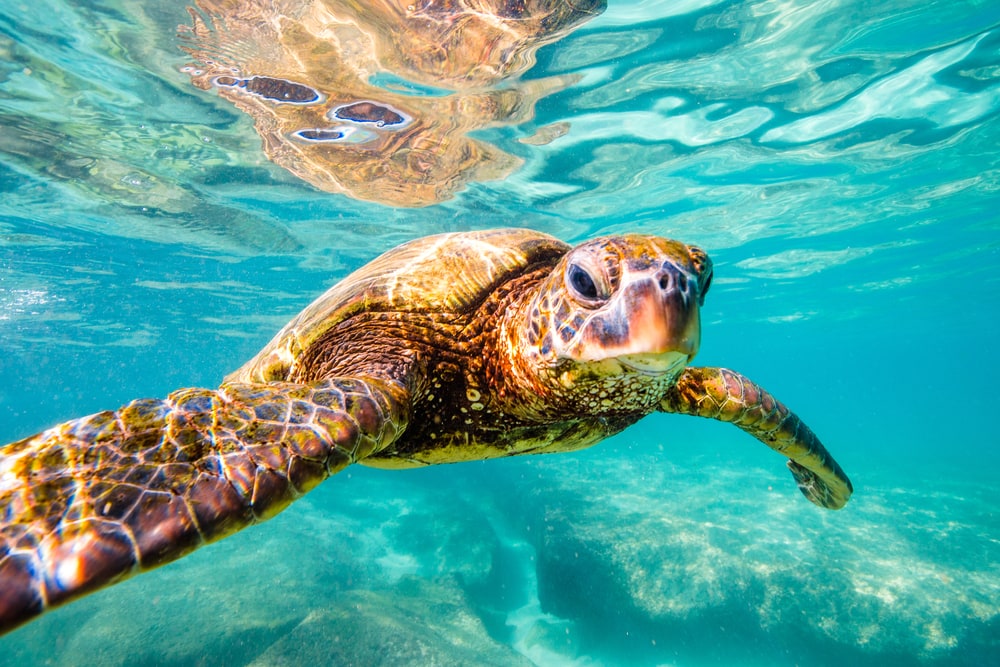
Turtles on the other hand love the water. They’ve adapted to be great swimmers and spend most of their time in the water. Some turtles are completely aquatic, only leaving the water to lay eggs on land. Others are semi-aquatic, leaving the water to bask in the sun.
4. Turtle vs Tortoise: Diet
With very few exceptions, turtles and tortoises have very different diets.
Tortoises are almost always herbivores. They’ll feed primarily on leaves, grasses, fruits, or vegetables. They’ll also sometimes swallow rocks when they need certain minerals like calcium.
Turtles are omnivorous. They’ll eat fish, amphibians, worms, insects, jellyfish, invertebrates, algae, plants, and sometimes larger creatures.
5. Turtle vs Tortoise: Shell Shedding
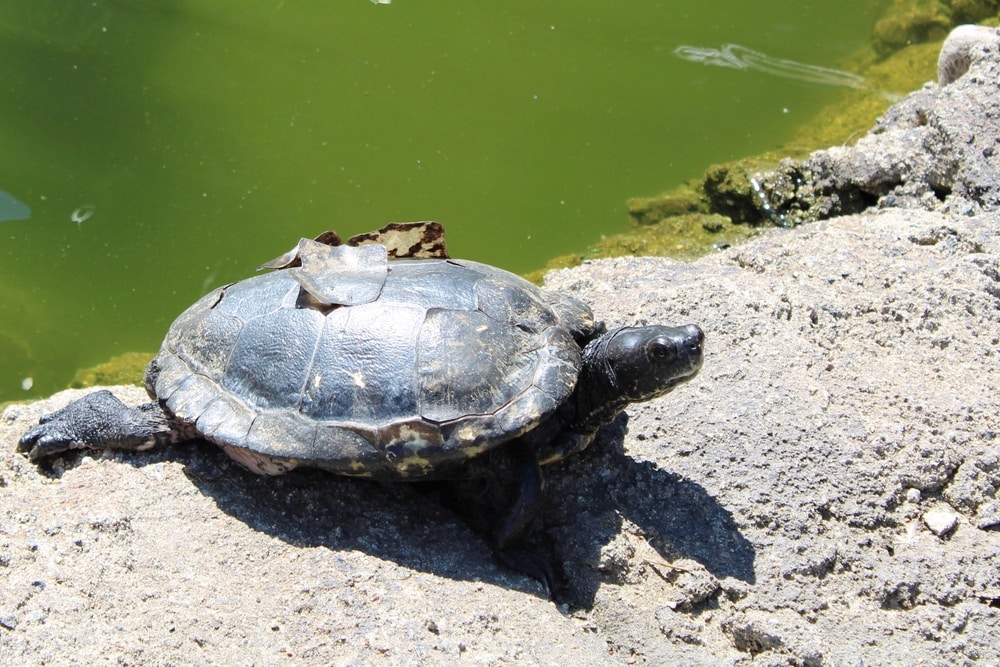
Turtles shed, while tortoises don’t. The scutes on a turtle’s shell flake off to allow new scutes to grow underneath. They’ll bask in the sun to help dry them out or scrape against rocks and trees to get them off.
Tortoise shells don’t shed. The keratin shell is constantly growing, layering itself, and bulking up. Rather than needing to shed, their scutes simply grow larger and thicker. It’s thought that this helps provide a stronger shell to protect them from predators.
In theory, this does make sense. Aquatic environments allow for more growths on the shell such as algae or mold, and shedding scutes helps to remove those from the turtles. Tortoises are usually dry and less conducive to growths like this, making it less necessary for them to shed.
6. Turtle vs Tortoise: Life Spans
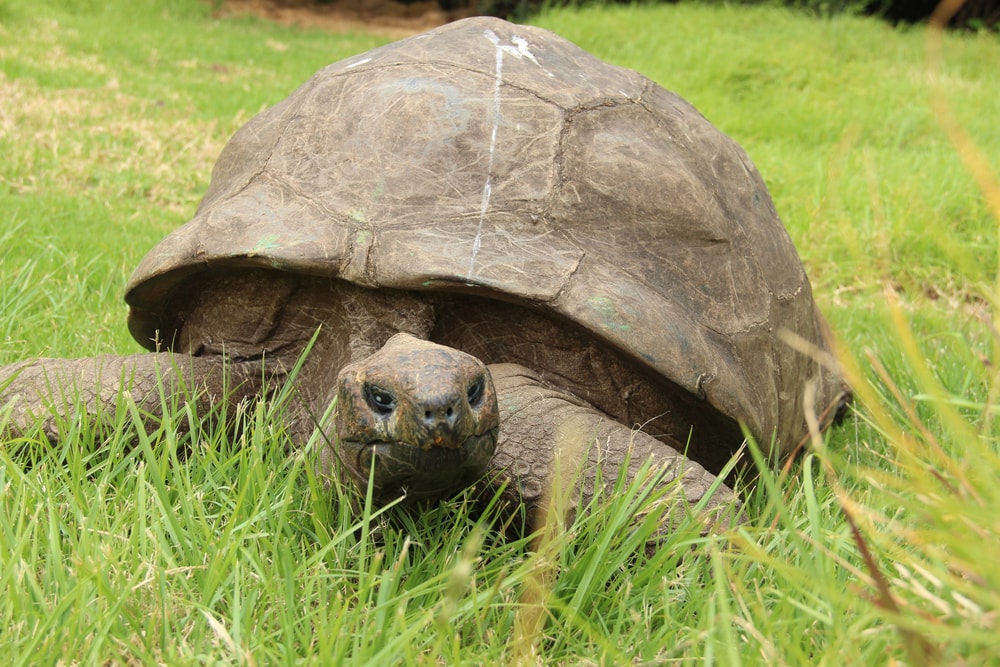
SEYCHELLES GIANT TORTOISE
Of the two, tortoises have a much longer lifespan than turtles do. In fact, tortoises are one of the longer-living animals on the planet.
A typical tortoise has a life expectancy that averages around 90 years if it avoids predators and has enough food. Giant tortoises are known for their ability to live well over 100 years, with some scientists theorizing a maximum age of over 200 years. A tortoise named Jonathan is the oldest, currently-living terrestrial animal at 190 years of age.
Turtles have much shorter lifespans. On average turtles only live to around 30 years of age, with large sea turtles living to around 65 years of age.
7. Turtle vs Tortoise: Hibernation
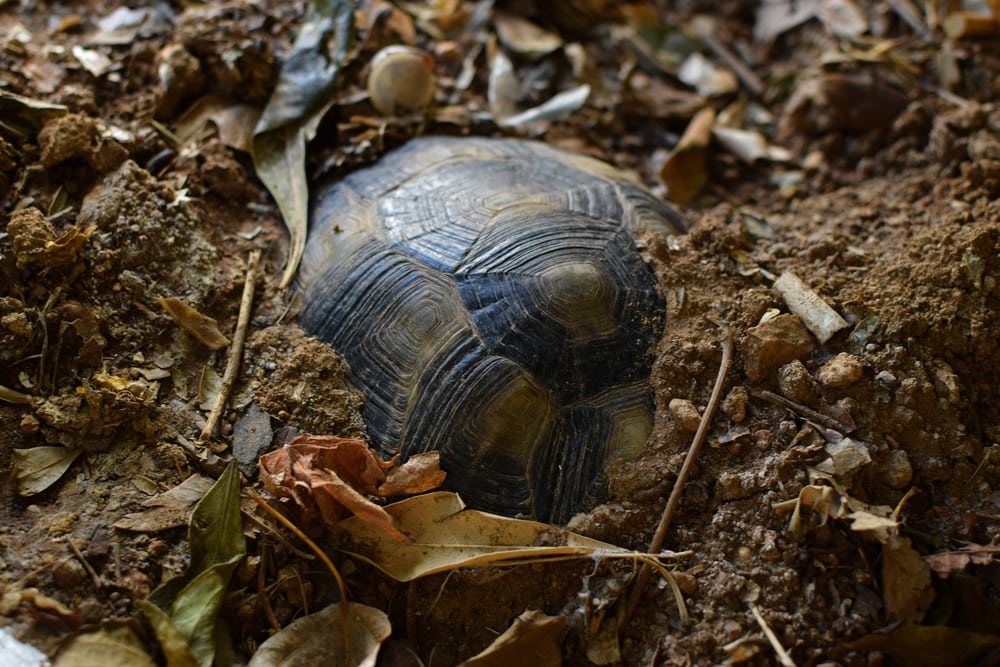
While neither animal truly hibernates the way mammals do, both turtles and tortoises enter a kind of hibernation state during winter. This is how the cold-blooded reptiles are able to survive when they would normally be unable to sustain their body temperatures.
Since they can’t regulate their body temperatures, turtles and tortoises are at risk of freezing. If ice crystals build up in their body, they simply die. To combat this, species of both animals slow down or stop many of their bodily functions and activity.
Tortoises can enter a state of dormancy called brumation. It’s essentially them shutting down as much of their bodily function as possible. On warm days, they can emerge from burrows to get some sun or drink some water. There are some tortoises that live in seasonally cold areas that are used to brumating, though most tortoises can’t do this activity and live in areas of the world where it isn’t necessary.
Turtles approach hibernation differently. They tend to hibernate underwater since it provides better insulation against the cold than air. It helps keep their body temperature stable through colder months.
The problem with hibernating underwater is that turtles breathe air. Different species combat this in different ways, but the massive slowdown of their metabolism and functions means they need less oxygen. Painted turtles and snapping turtles are able to switch their metabolism to not require oxygen at all.
This has a time limit on it due to acid buildup in muscles, but it’s usually long enough to get through the winter. To ward off the acid, these turtles actively move calcium from their shells to neutralize the acid.
Turtles are also able to breathe somewhat using their butts. This “butt-breathing” essentially moves water over blood vessels which take in small amounts of oxygen for the turtle.
You may also like: Learn the Different Species of Turtles in Florida: With Chart, Images, Facts, and More
Similarities Between Tortoise and Turtle
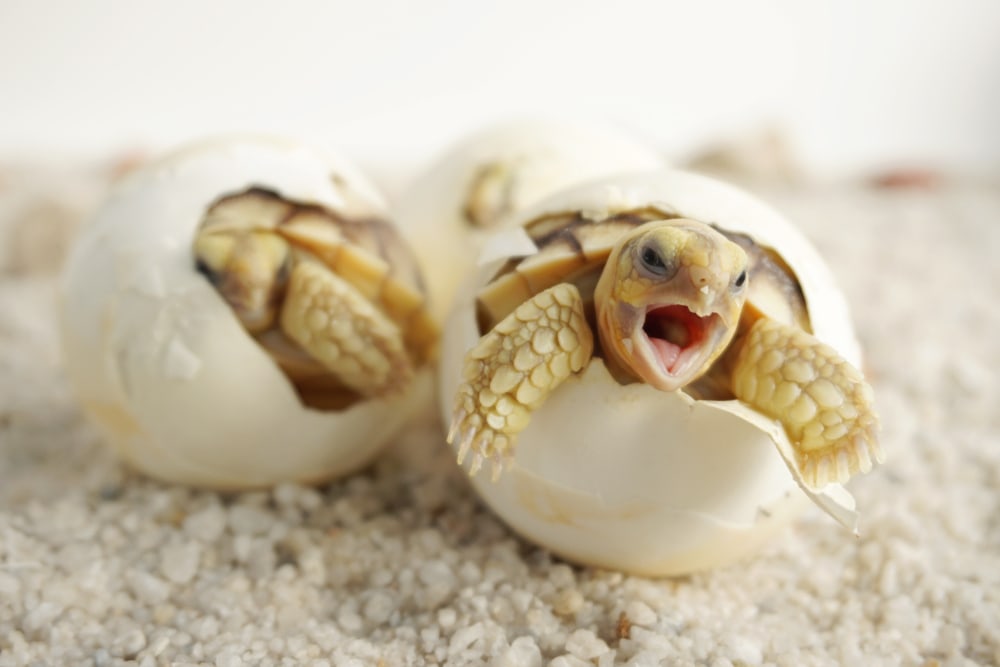
While you can tell turtles and tortoises apart, they’re very similar animals that belong to the same family in the tree of life. A lot of things about them are, for the most part, the same.
You may also like: Learn the 15 Fascinating Types of Jellyfish: Which are harmful, which are not? Complete with Images, Facts, and More!
Threats to Turtles and Tortoises
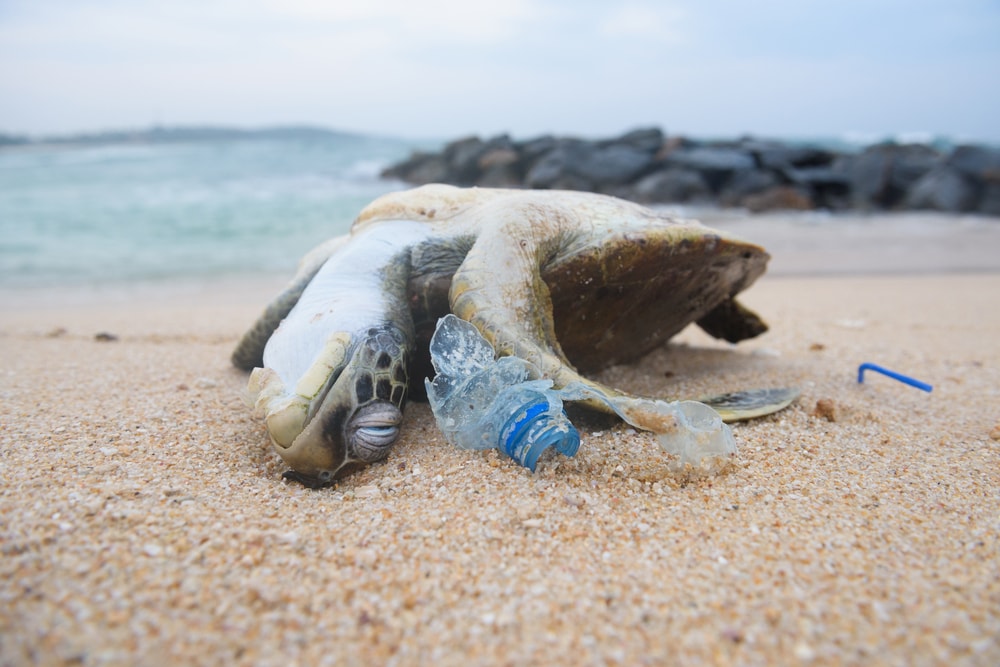
Like every other species on the planet, turtles and tortoises deal with existential threats from climate change and human activity. Pollution, habitat destruction, overconsumption, invasive species, and climate change are the biggest threats.
1. Pollution
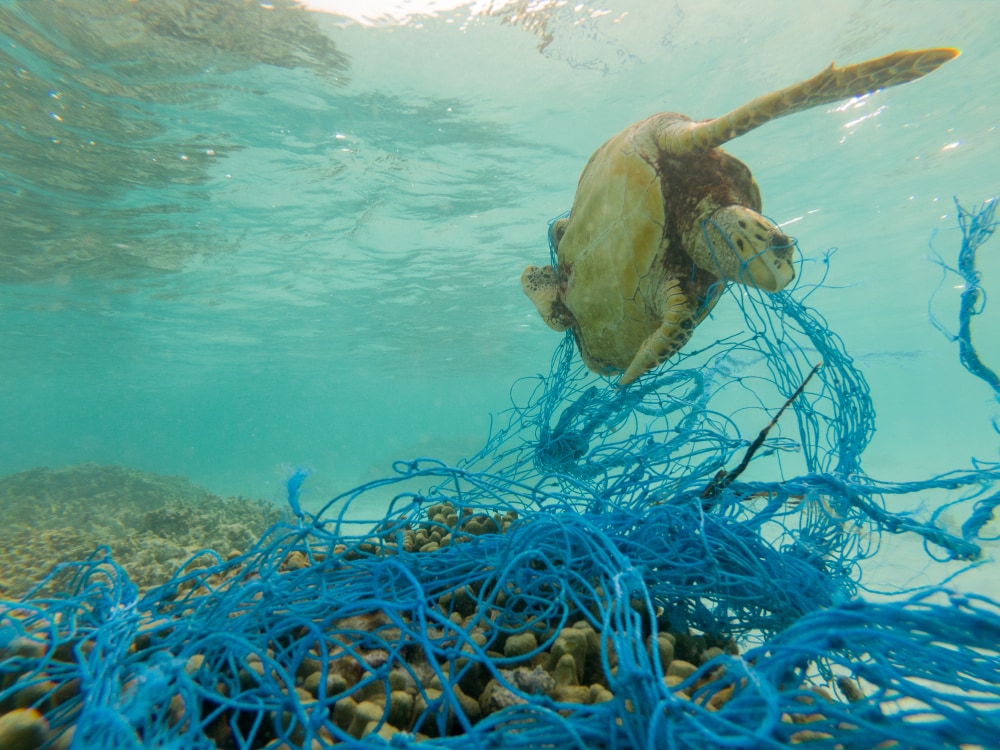
Pollution affects turtles and tortoises in a multitude of ways. Trash is a massive issue for them, especially sea turtles. Plastic pollution in the ocean is a major problem that needs to be addressed.
Sea turtles commonly feed on jellyfish. Unfortunately for them, they don’t have great eyesight and a floating plastic bag looks incredibly similar to one of their favorite meals. Consumption of plastic can lead to the turtle’s death over time.
Other trash can cause serious injury or death for turtles and tortoises. Plastic rings from cans, shopping bags, cans, and bottles make up a massive amount of pollution in their native environments. While overstated mostly thanks to a viral video, plastic straws can sometimes get wedged inside turtles as well.
The overall environmental impact of pollution is also a problem. This leans towards habitat destruction, however, as trash and chemicals enter ecosystems and the food web, so too does it endanger turtles and tortoises.
2. Habitat Destruction
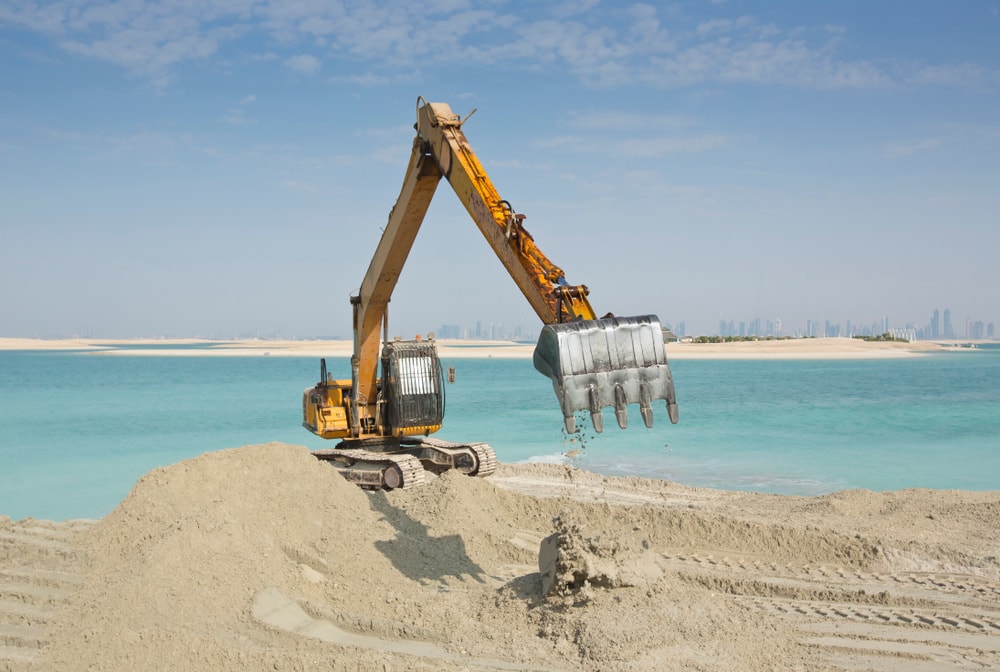
Like other animals, turtles and tortoises are dealing with the urban expansion of humans. As we divide and destroy areas of land, those animals are forced to move on. While both can migrate, sometimes great distances, that doesn’t keep them safe.
Population fragmentation can be the result of habitat destruction. It’s basically where a population becomes separated into smaller groups and can’t cross certain areas to get to each other. This lowers genetic diversity and the overall health of a population.
Many turtles either live in one area their entire lives or return to the place of their birth to lay eggs. Sea turtles are the prime example of this, traveling thousands of miles to return to the beaches they were born on. When people build on that beach, it disrupts the nesting ground, putting eggs and babies in danger and sometimes causing turtles to not lay eggs at all.
It would be simple to say they could just lay them somewhere else. Unfortunately, this behavior is hard-wired into them and has resulted in large population drops due to the inability to reproduce.
3. Overconsumption
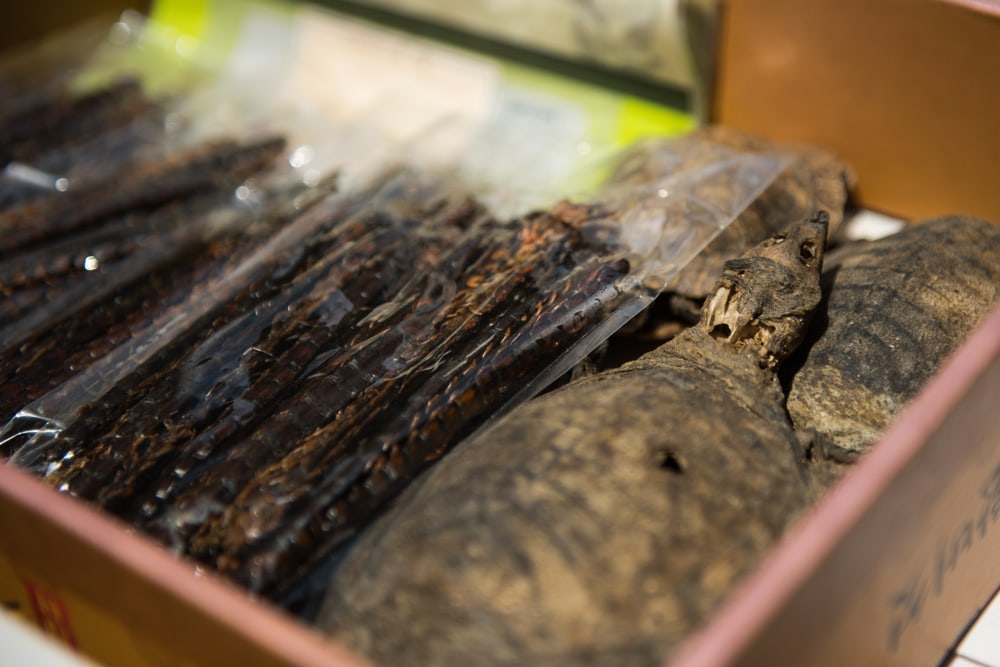
Humans consume turtles in huge quantities for food, medicine, and taking them for pets.
Turtles are farmed or caught in the wild to end up on the dinner table around the world, but especially in Asia. Softshell turtles are a popular food source and are farmed. Turtle eggs have decent marketplace value as well.
Turtles are also used for medicinal purposes. Traditional Chinese medicine comes up frequently when listing threats to multiple species, and turtles are no different. Tigers, turtles, reptiles, rhinos, elephants, and a multitude of animals all have some level of value in the practice. The increasing demand contributes to the decline of those species.
As pets, turtles have become increasingly popular. Small turtles make pretty good pets thanks to their adaptability and overall are fairly easy to care for. They’re fun to watch swimming around or feeding.
The problem is that endangered and rare specimens are becoming something of a status symbol. Thousands of these turtles are confiscated from smugglers each year in raids on the illegal pet trade.
But why does our consumption of turtles or keeping them as pets matter?
Aside from the fact that our level of harvest is unsustainable, there are two big problems.
Turtles have high birth rates, but this is to make up for their incredibly high mortality rate. They lay large clutches of eggs, but 80%-90% of juveniles don’t survive to adulthood. Contributing to raising that percentage results in a population decline.
Female turtles typically can lay eggs their entire lives. They don’t end up unable to breed by getting too old. This also helps make up for their high mortality rate. When adult females are removed for food or pets, that takes away thousands of potential eggs that can keep their population going.
4. Invasive Species
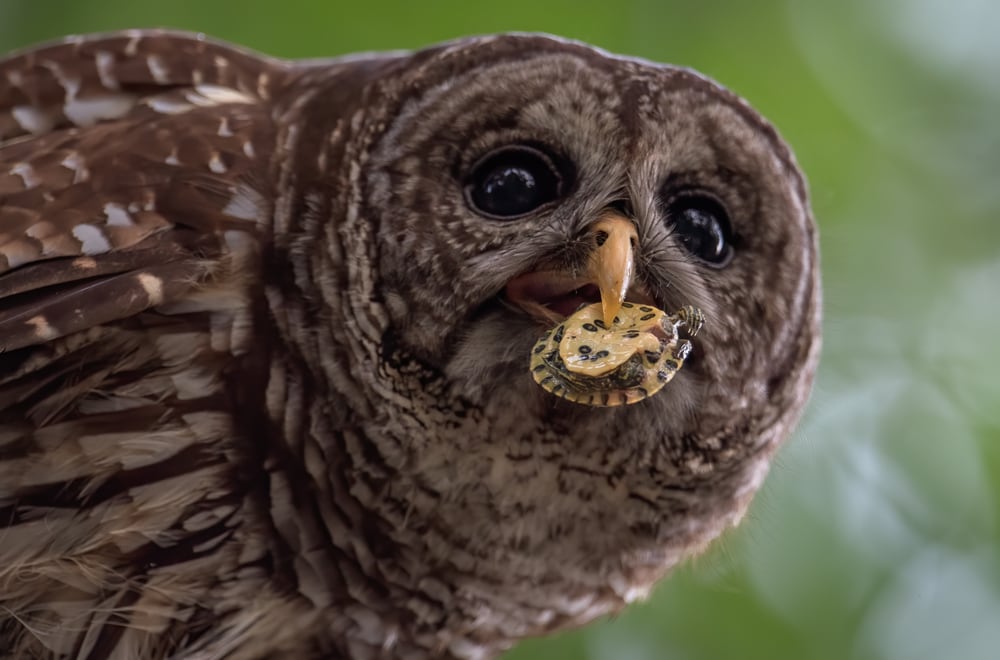
Invasive species usually have a massive negative impact on native species. They come in and out compete native species for food, don’t have natural predators to keep their population in check, and multiply exponentially thanks to these things.
For turtles, invasive species pose a few threats. More potential predators mean more turtles get eaten. This decreases the adult population of turtles that can breed more and also increases the mortality rate among juveniles.
Eggs aren’t safe either. Many animals already raid turtle nests and consume their eggs like raccoons. Typically, there are enough turtles in an ecosystem that the number of surviving eggs and juveniles is in balance with those egg eaters. When an invasive species is added to this, the pressure on turtle eggs increases to unsustainable levels.
Through consuming them or out-competing them for food, turtle populations suffer and can even disappear because of invasive species.
5. Climate Change
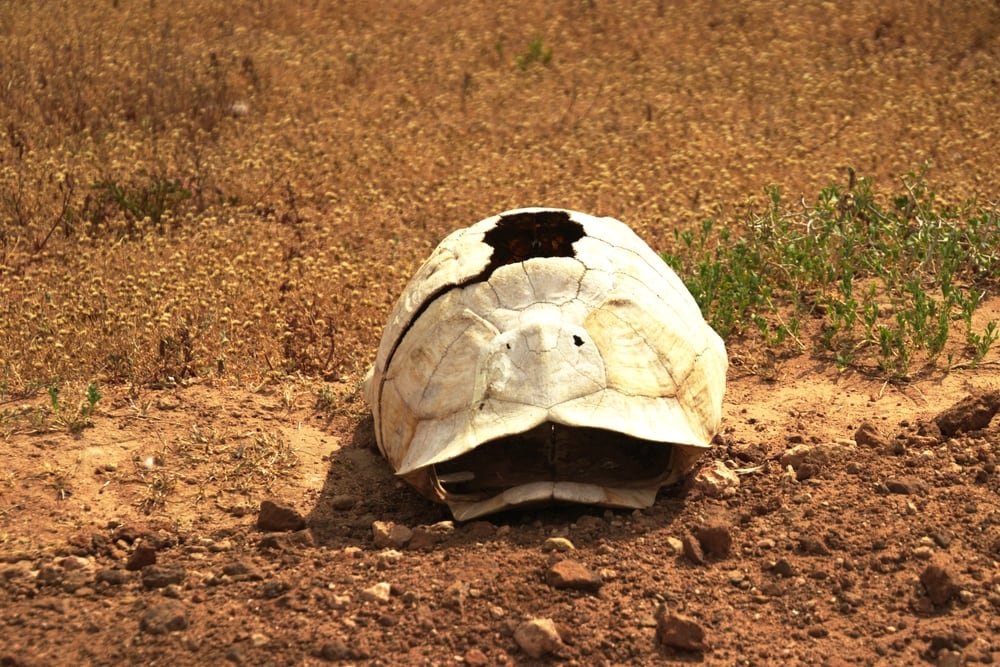
Just like every other animal on the planet, turtles are subject to changes in climate. In the short term, milder winters and warmer temperatures would seem like it would expand turtles’ ranges and give them more time to feed through the year.
From a short-term perspective, this isn’t completely false. Warmer temperatures over larger ranges allow reptiles to expand to new areas. The problem is that they will also need to consume more food.
Higher temperatures mean turtles spend less time in a “hibernation” state where their metabolism is slowed. This can lead to declines in food population and subsequently a decline in turtle population as food becomes more scarce.
In regions that are already hot or arid, they will become hotter and drier. This is also a problem for turtles and tortoises that have adapted to their average temperatures.




